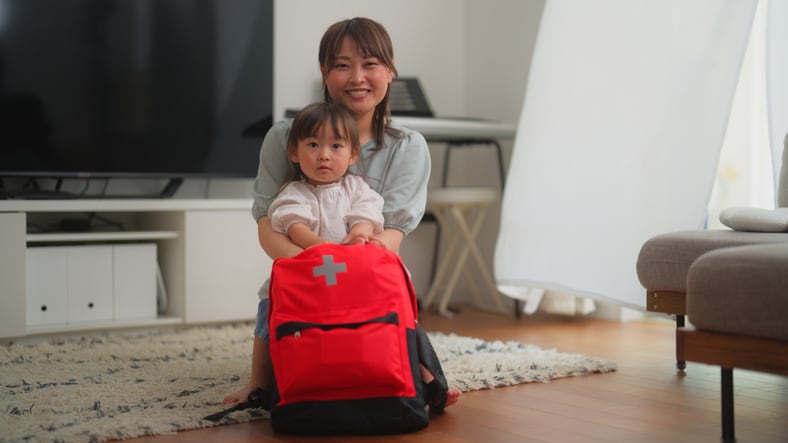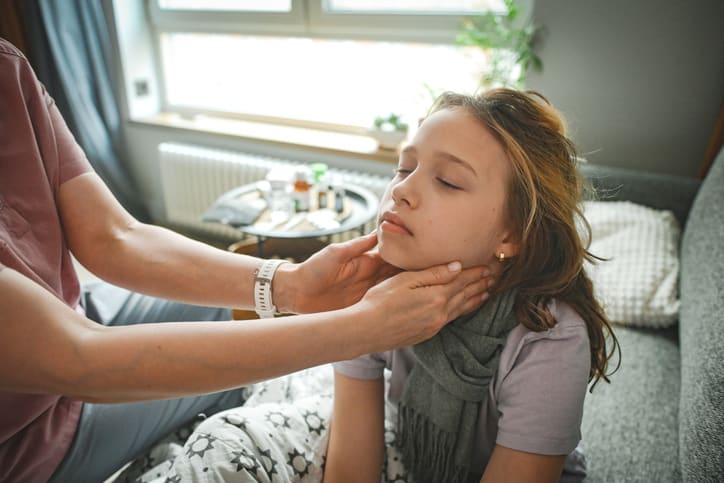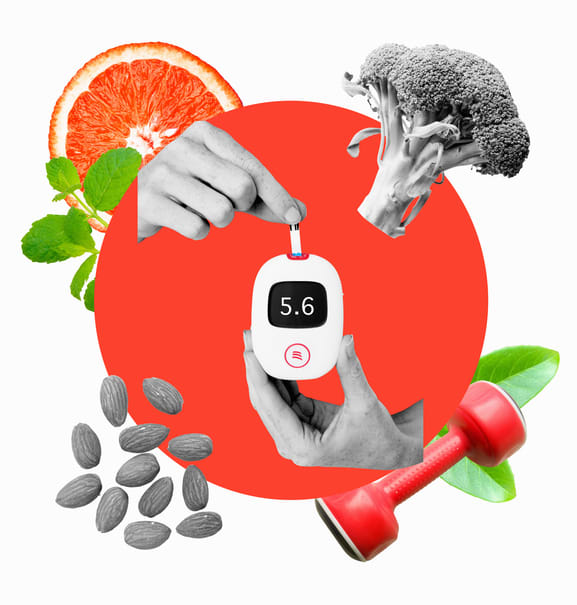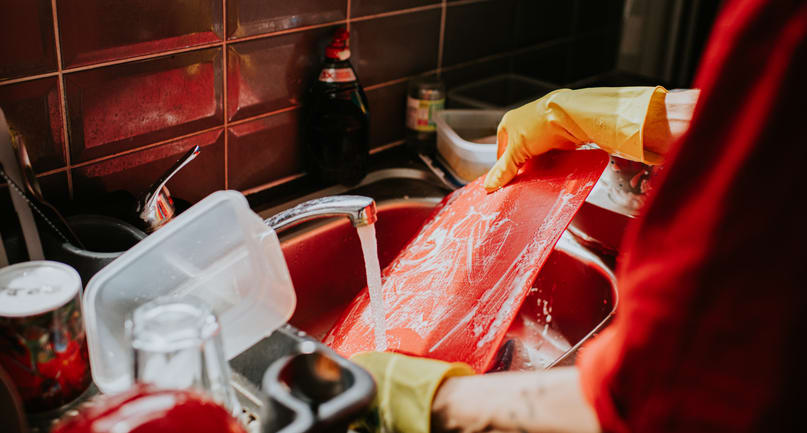Make sure your first aid kit is more than bandages and bacitracin

[3 min read]
In this article:
- First aid kits are an essential part of emergency preparedness.
- Make sure your kit contains the basics, like bandages and anti-bacterial cream, as well as personal information, including a list of medications and emergency phone numbers.
- Store your kit where it's easily accessible in case of an emergency.
Having a well-stocked medical emergency kit is a fundamental part of home and outdoor safety and overall emergency preparedness. But with the many demands of family life these days, it’s also something that gets put on the back burner until one of our littles takes a spill or that bug bite is scratched raw. Taking the time to put together a comprehensive first aid kit for home (and on the go) can help you address minor injuries and avoid trips to urgent care or, in more serious situations, provide short-term care until professional medical help arrives.
It's never a bad time to take inventory of the medical supplies you have on hand and put together a first aid kit for your family. If your child’s school permits, you can make one that can be stored in a locker or backpack. If your child isn’t old enough to carry their own kit or their school requires pre-authorization for medications, check with the school to see if it’s something they will store for them, especially if the kit has first aid items that are specifically for your child. When it comes to first aid, there’s no such thing as being too prepared.
What are some first aid kit essentials?
The basics:
- Sharp scissors (while these are fine for your family’s first aid kit, you might want to double-check your child’s school policy if adding these to their kits)
- Tweezers
- Thermometer
- Small flashlight with extra batteries
- Safety pins
- Adhesive tape
- Petroleum jelly
- Cotton balls and cotton swabs
- Latex or non-latex gloves (helpful for preventing infection risk from cuts)
- Personal medication information, medical consent forms or allergy history information
- A list of emergency phone numbers
Supplies for cuts and scrapes:
- Assorted sizes of adhesive bandages
- Sterile gauze pads or rolls (one or two inch wide)
- Hydrogen peroxide or antiseptic wipes
- Anti-bacterial cream or ointment
Relief from sprains, twists or pulls:
- Elastic bandages
- Pain relief medication such as acetaminophen or ibuprofen
- Finger splint
Other medications and helpful items:
- Calamine lotion for insect bites and rashes
- Hydrocortisone cream
- Antihistamines for allergic reactions
- Activated charcoal in case of accidental poisoning (check with your local poison-control center first)
- Rehydration beverages to replace fluids and electrolytes lost to sweating or vomiting
- Sunscreen
- Insect repellant
It’s also useful to pack a first aid manual so you know how to use the materials in your kit. If you’re wondering what to put your items in, plastic art supply containers and tackle boxes work great and can be found at your local crafts store. Make sure that whatever container you choose is waterproof, lightweight and translucent so you and your child can see what’s needed even before opening the case. Look for containers with handles to make it easy to transport the kit from one place to another. Store your new kit where it’s easily accessible – in your kitchen cupboard, under the bathroom sink, in your car’s glove box or under your passenger seat.
And finally, be sure to check your materials and supplies often. Medications and ointments and sometimes items can go missing. It’s recommended to review kits every year to make sure they are up to date.
Learn more and find a physician or Advanced Care Practitioner (ACP)
Whether you require an in-person visit or want to consult a doctor virtually, you have options. Contact Swedish Primary Care to schedule an appointment with a primary care practitioner. You can also connect virtually with your doctor to review your symptoms, provide instruction and follow up as needed. And with Swedish ExpressCare Virtual you can receive treatment in minutes for common conditions such as colds, flu, urinary tract infections, and more. You can also use our provider directory to find a specialist or primary care physician near you.
Information for patients and visitors
Related resources
The best time to find a primary care practitioner is when you don’t need one
At Providence Swedish, the best care for kids of all ages
Don't scratch that! Tips for managing summer's bug bites
Planning a holiday weekend outing near the water? Keep these safety tips in mind.
This information is not intended as a substitute for professional medical care. Always follow your health care professional’s instructions.
Providence Swedish experts in the media
Follow us on Facebook, Instagram and X.



